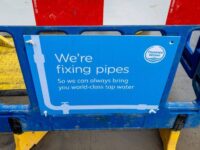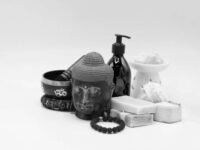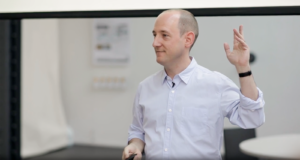Matthew Stibbe – a serial entrepreneur, started his first company at the age of 18. An experienced marketer, a pilot, and a CEO of several companies, he shares the lessons learned from developing a SaaS product for streamlining purchasing, time off and expense management, Turbine.
10 Years From Idea to Implementation – Matthew Stibbe
To tell you how Turbine was set, we have to go back in time to 1999 when I was 18. I used to run a computer games company called Intelligent Games. And in 1999, another company nearly bought my business. And I was thinking, what would I do if I sold my company? As a business owner, I faced lots of paperwork. And I thought, “Wouldn’t it be good if there was an application where I could sign up and do all of that online?” Whatever you want to do today, there’s an app for it but in 1999 there was nothing. To make it real then, I would have needed to hire 20 or 30 people, have my own data center, as I was going to build a complicated software project. And I put that idea on the shelf and went away.
In the end, I sold Intelligent Games and took a sabbatical to become a journalist and a pilot, and then I started a copywriting agency. In 2008- 2009 my business was under some pressure. At that time, I thought that I needed to diversify. And I remembered the idea that I had had in 1999. At this point 10 years later, there were more applications out there with the idea I had. But also, and this is the important difference at that time, you didn’t need your own data center, you could go to Digital Ocean and get servers in the cloud. You didn’t need to hire an in-house dev team, but go to Elance and find freelance developers. And 10 years later, I realized I could do it. We’ve built my app together with Anadea, a full-cycle software development company. It’s growing, and it’s profitable, and I enjoy it.
How to Highlight a SaaS Product Among Competitors
I think the challenge now for buyers is choice, right? So, what do you have to do to highlight your app? I think you need good marketing. I see it, as I’m a marketer. So I guess, what you need is to focus very hard on the thing that adds value for the customer and be very good at 1 or 2 things. I learned this years later, from my own experience.
When I started developing Turbine with Anadea, the idea was originally wide – time off expenses, appraisals, HR record keeping, etc. We were going to add modules so that you could do your whole business in Turbine. We were adding a new thing every 6 months! We had all kinds of things in Turbine, but we took them out. So, that’s about focusing on a thing that you do well, where you have a niche. There’s still time off expenses, purchase orders, and a bit of HR record-keeping. I think if I was starting today, I would just do one of these things, as they have proved to be the most used. What we see as a trend is that people come in for one thing and then they start using the other functionality.
The other thing I wanted to tell you about is a redesign of the user interface we did in 2017. I think user expectation now is for something that’s very fast, modern-looking, attractive, easy to use. I think the current version still looks modern. Also, over the last year or two, we’ve been doing a lot more work on performance. Although the user doesn’t see that it doesn’t look different, the app is much faster today.
The Recipes of Success Learned From Painful Lessons
I’ve learned a couple of things about product app development. I think the first thing as I already said is “do less, but better”. Do one thing really well, rather than five things adequately.
The second thing was learned from a really painful lesson. Every client wants your app to do exactly their thing, solve their problem. They say: “I love your app, I like the price, etc. but in our business, we do this unusual thing about expenses or time-off or purchases. If only you could do this one thing that we need, we would use your app.” And for a long time, I listened to them. I was adding extra features like budgets, or multi-stage approvals, multi-currency, etc. But what happens is the application gets more complicated, and that makes it harder for people to get started.
The reality is that there are not enough customers to use the basic functionality that you build. You don’t need to add every single feature request.
What I needed to do was to make this easier to use, to set up faster, to understand faster, and only for those people who use basic functionality. I don’t need millions of customers. And I can think of so many things that we have added to Turbine that I have paid for. It’s like $10,000 of software development for a feature used by one client company. And then six months later they go and sign up for Microsoft Dynamics ERP. They say: ”We need this other stuff.” If I had my time over again, I would resist these one-off, special case requests. Instead, I would look at my app, and I’d make it better for the majority of users.
If I was going to add one thing to Turbine now, probably I’d have a native app. I think people want to have something that you can download and install.
Nuances of Choosing an App Development Company for Your Product
When somebody is considering outsourcing or offshoring their software development, the important things to look for are: responsiveness in an emergency, constant improvement, DevOps, attention to optimization, quality control, and continuous integration, testing. This is all very unglamorous. Operational stuff like this always seems less sexy than adding new features. But you need to do it right because anyone can build a good-looking app but it’s all these things that improve the quality of the experience for users.
I think when I started working with Anadea all those years ago, although I had a background in software development, I didn’t realize how much work was just polishing and fixing. And it’s constant. I respect this now, and I’m very grateful for it when we get a performance outage, or when the SSL certificates expire, or some crisis, or emergency – comes up, because the Anadea team gets right on it and fix it. And I value a lot that they are there and ready to support me if something comes up. So, that’s critically important for any business, so don’t overlook it.
I rely on my vendor to make Turbine work and keep it working. That’s not a trivial or an amateur thing. It needs people who know what they’re doing and you know what you’re doing. When you’re working on the product for a long time, there should always be continuity. When there’s been a handover from one member of the team to the next, it needs to be done very well. So, I have never really been concerned when I see a new face or a new name because I always think that I’ll get continuity. I have to rely on their ability to find good people and put them on my project and hand it over properly.
























0 Comments